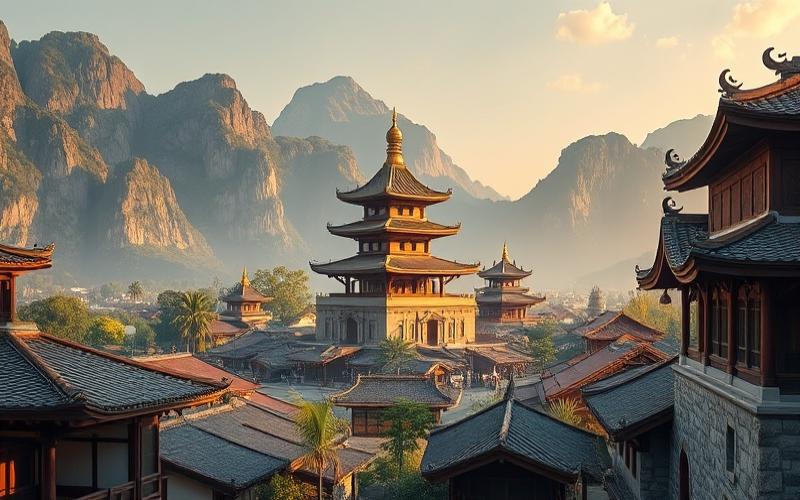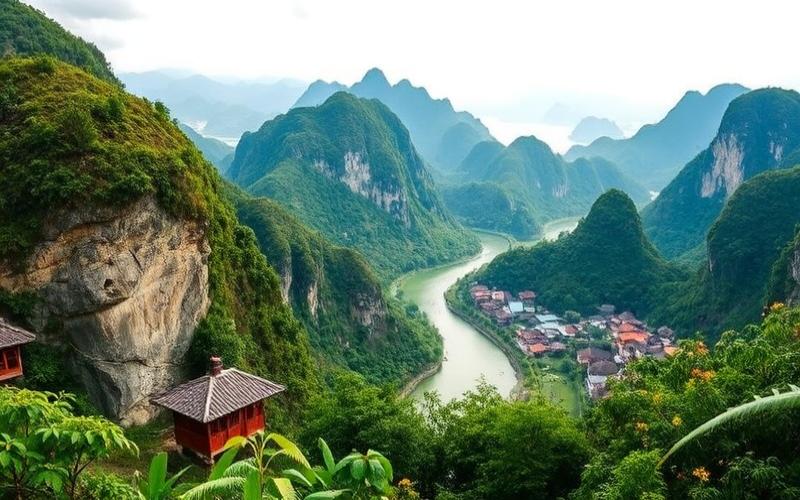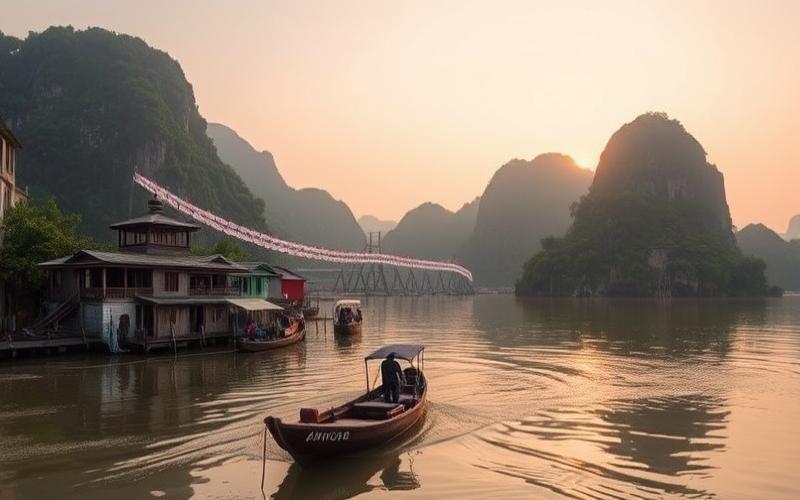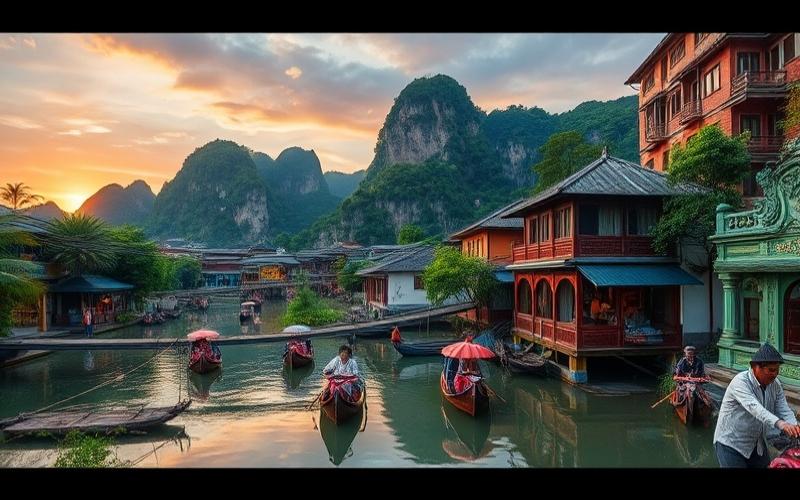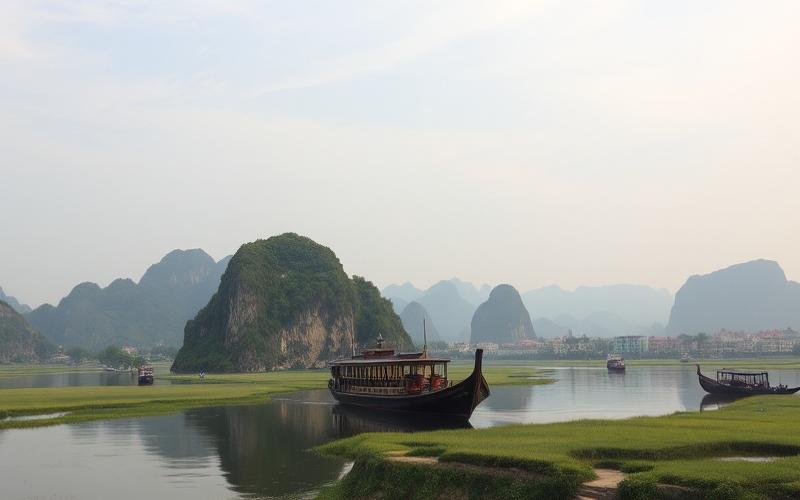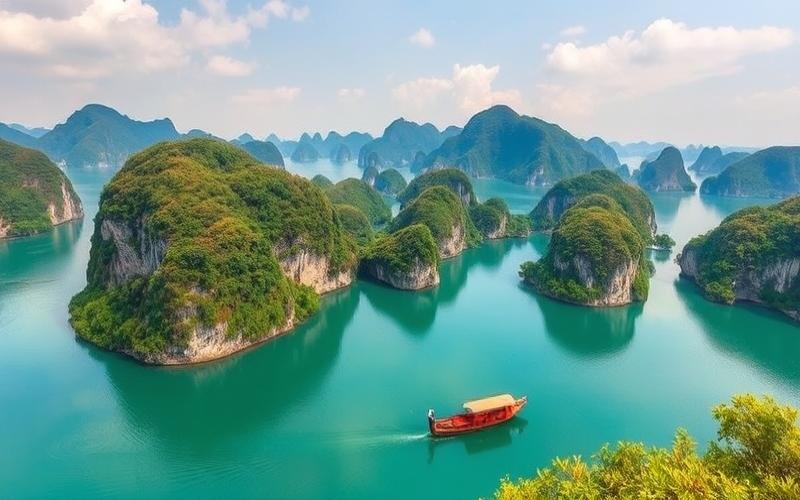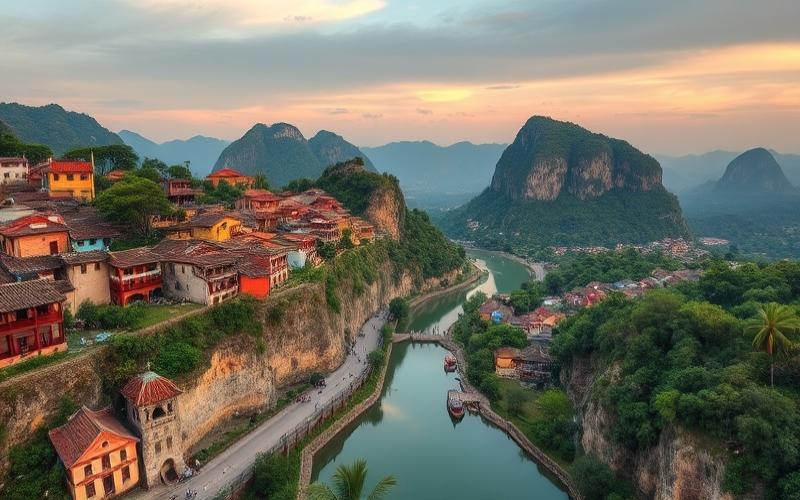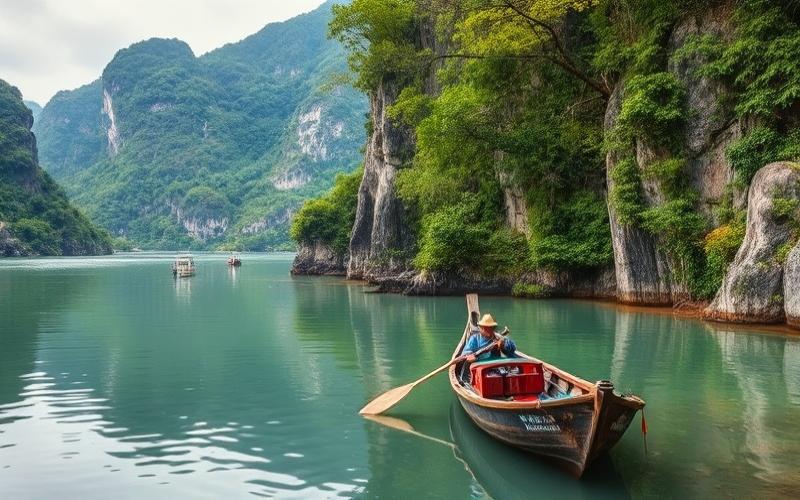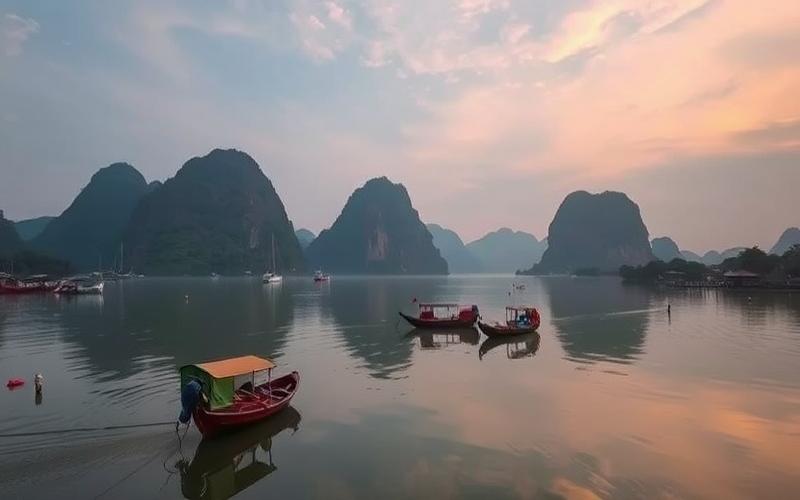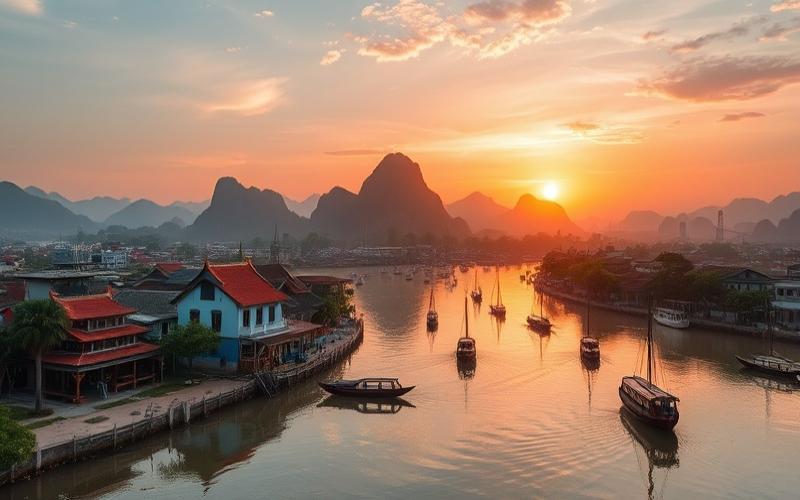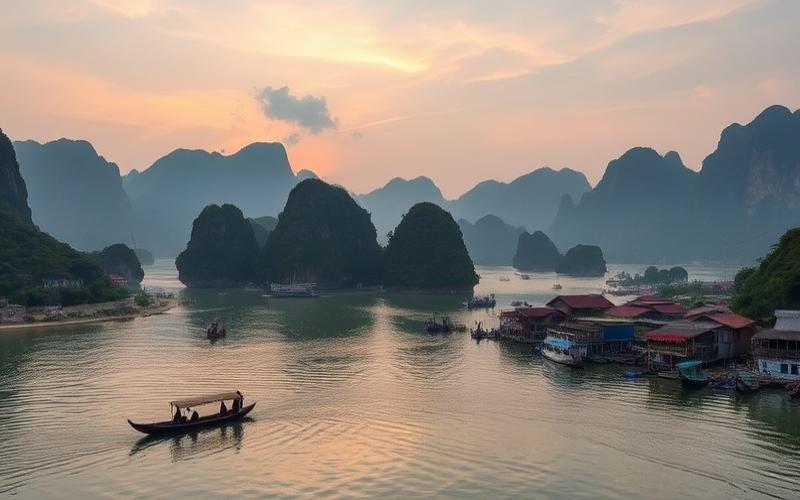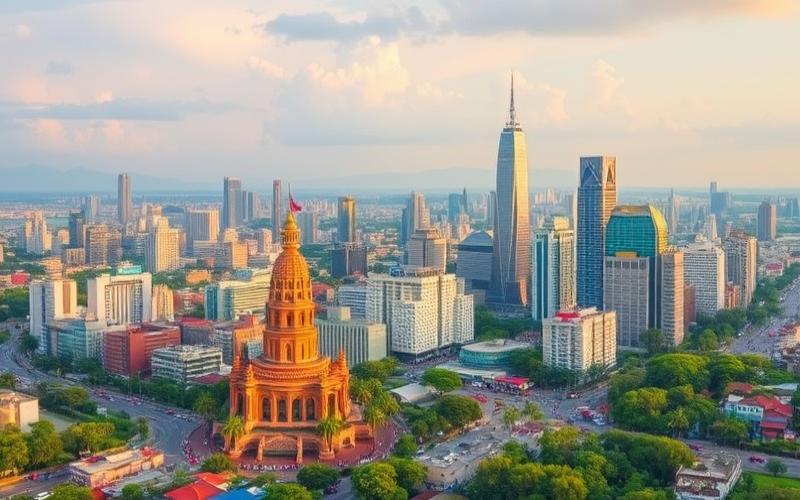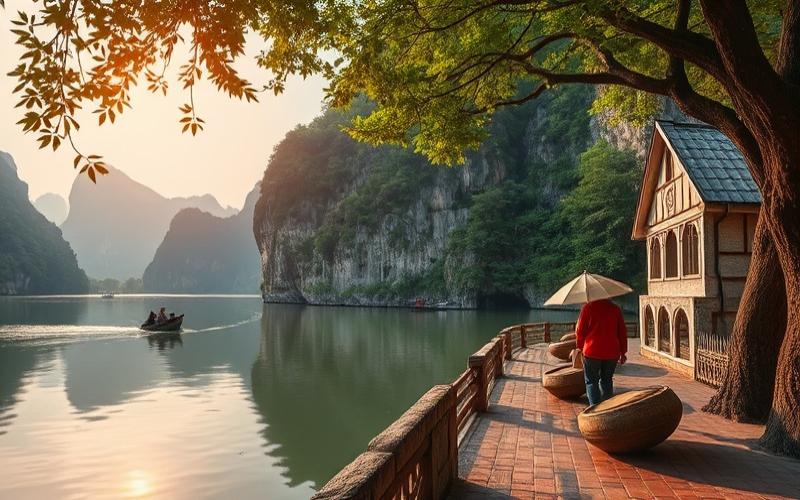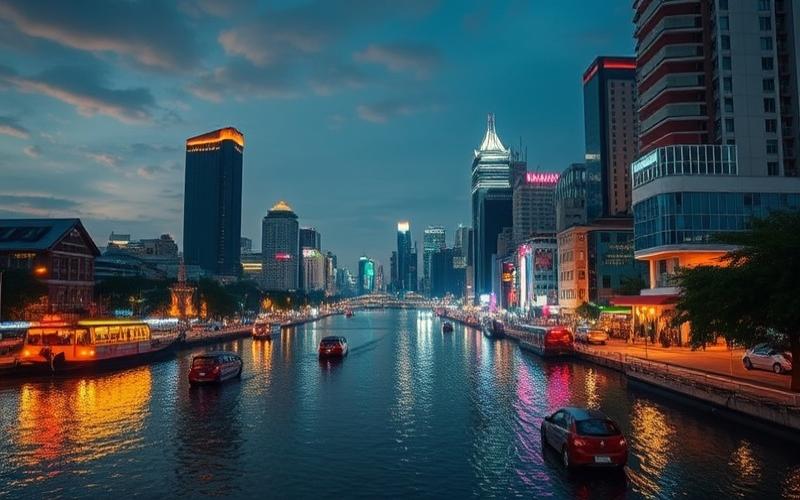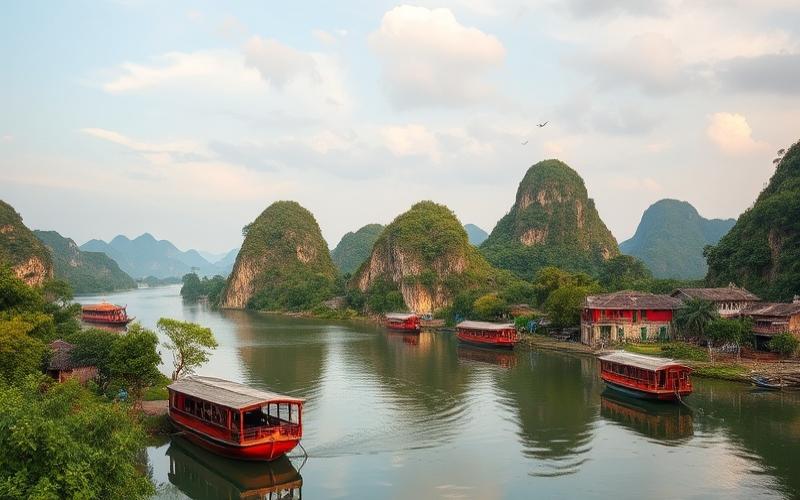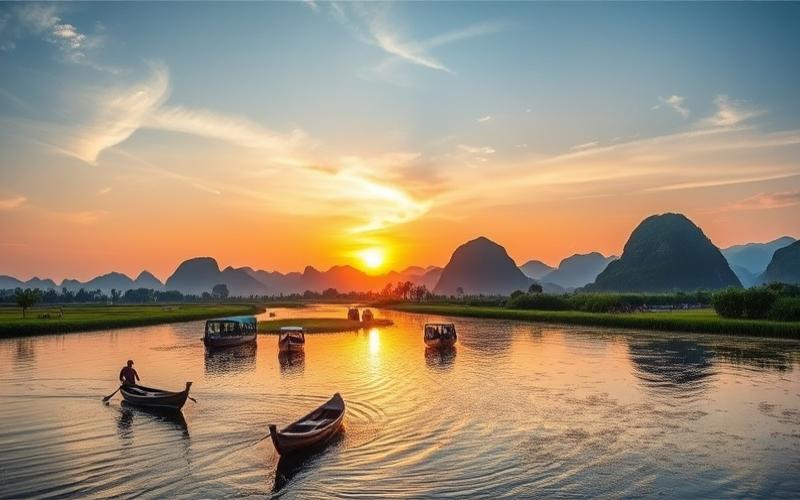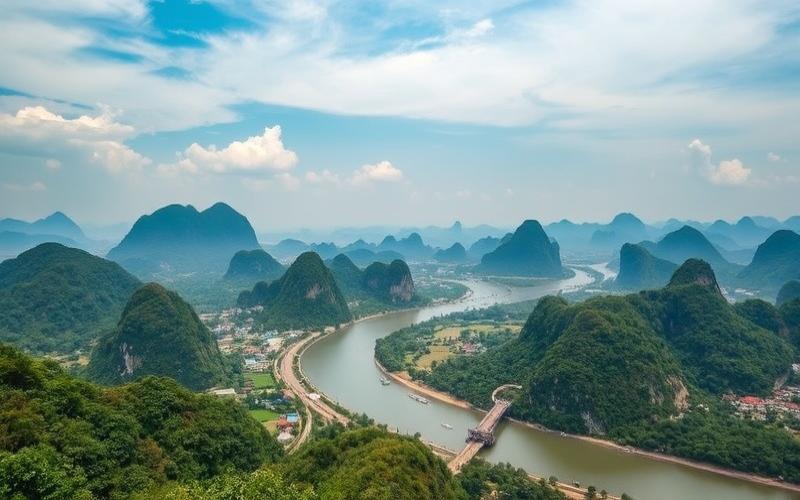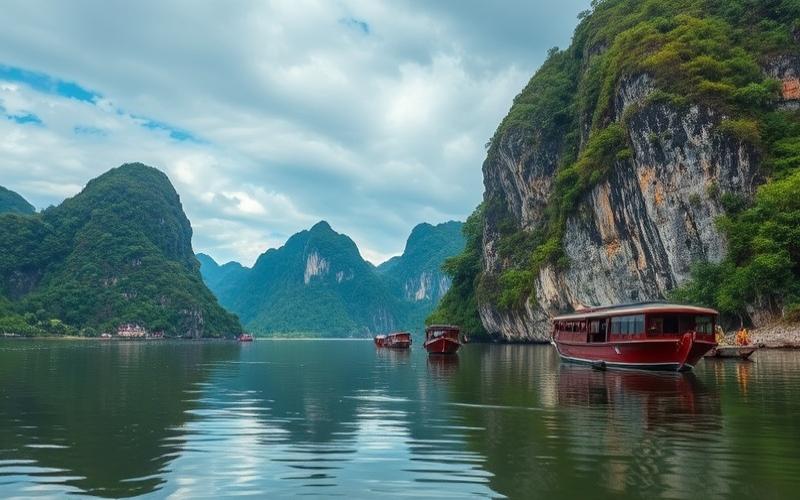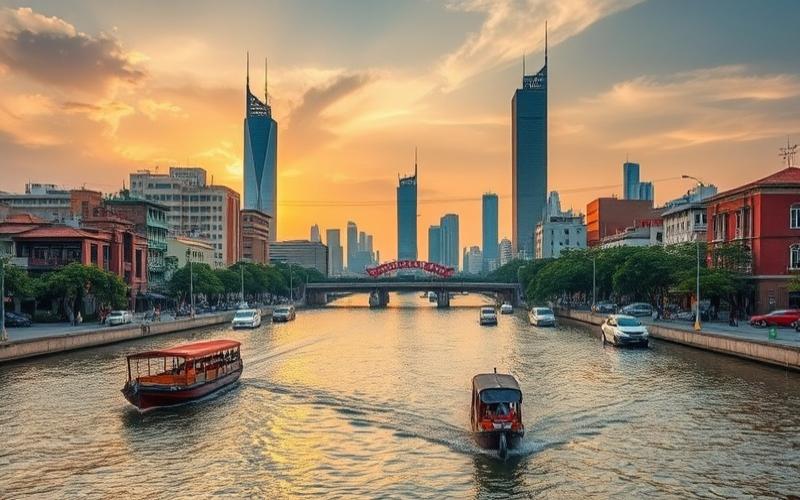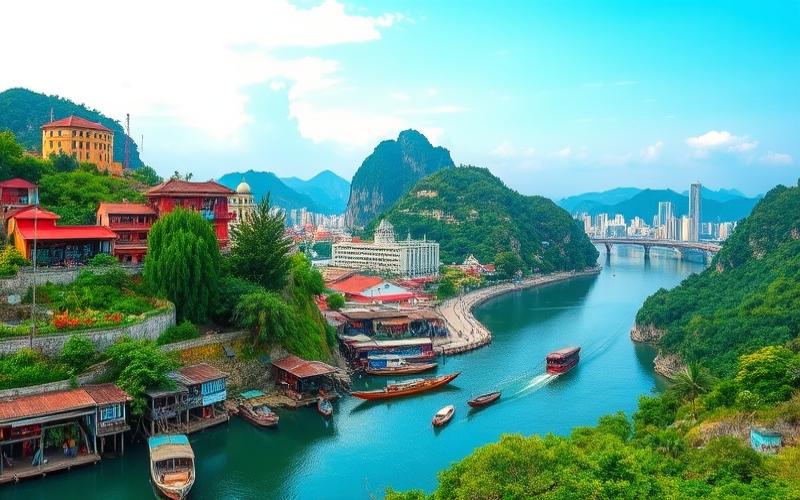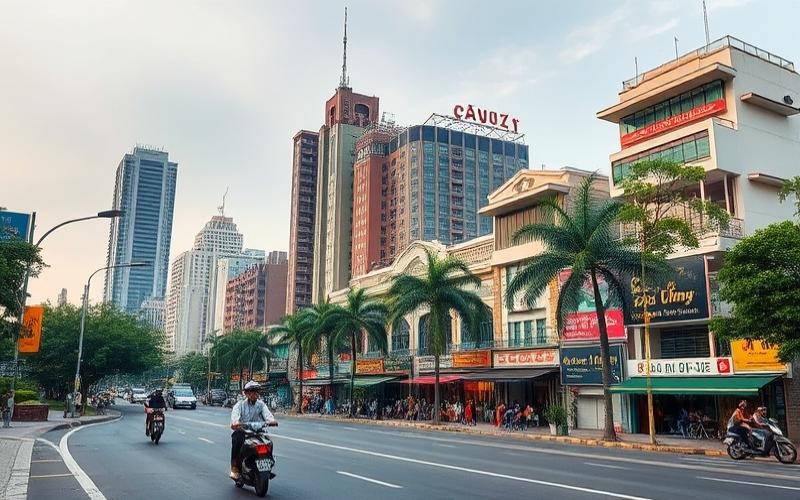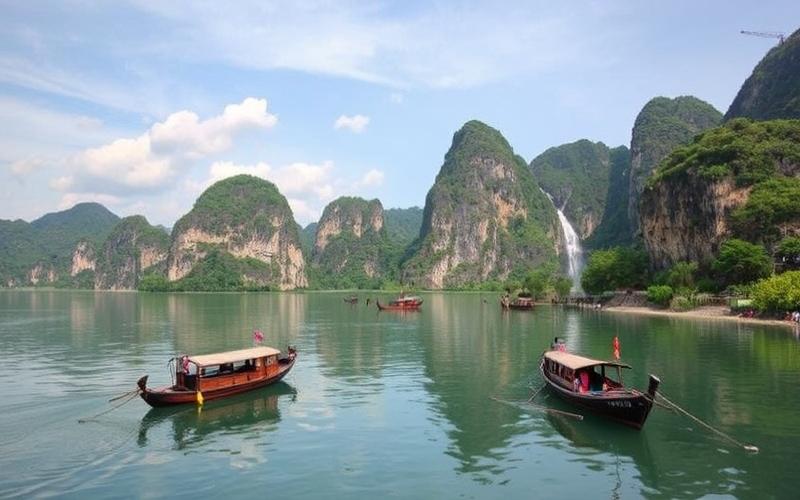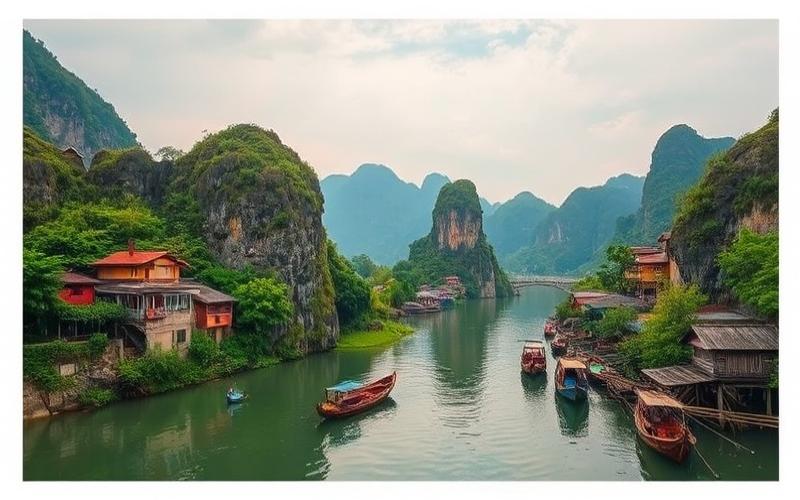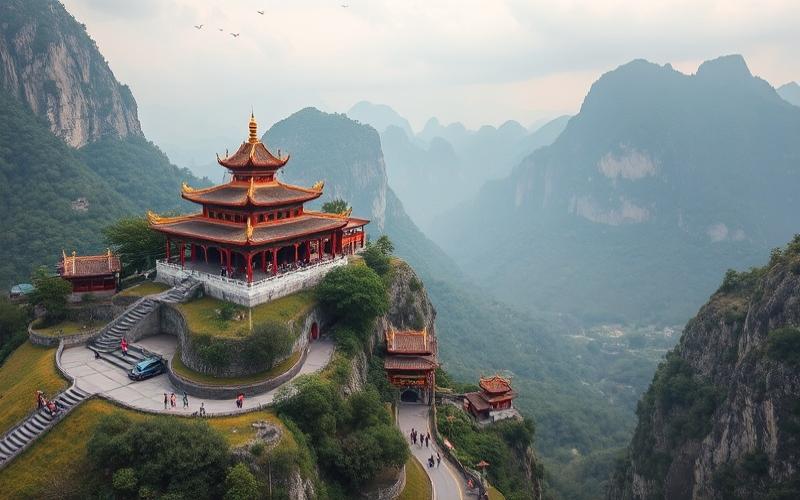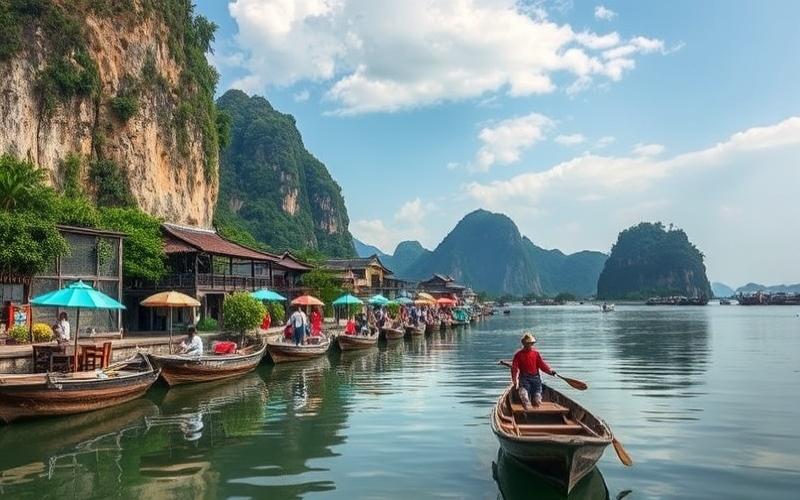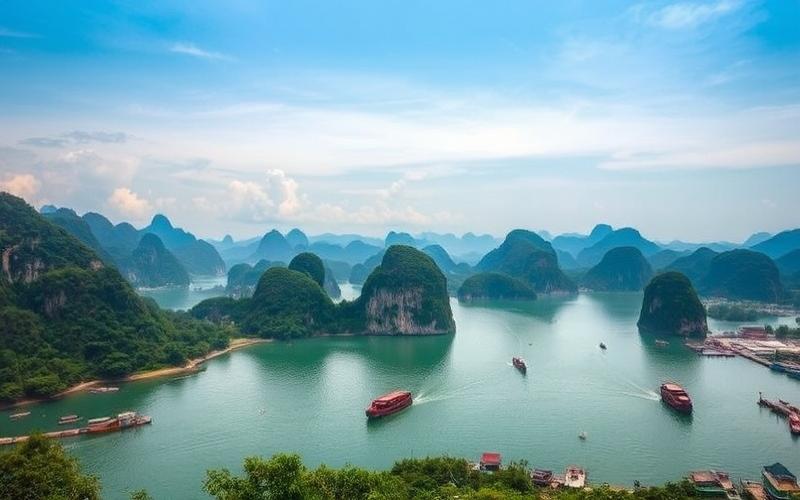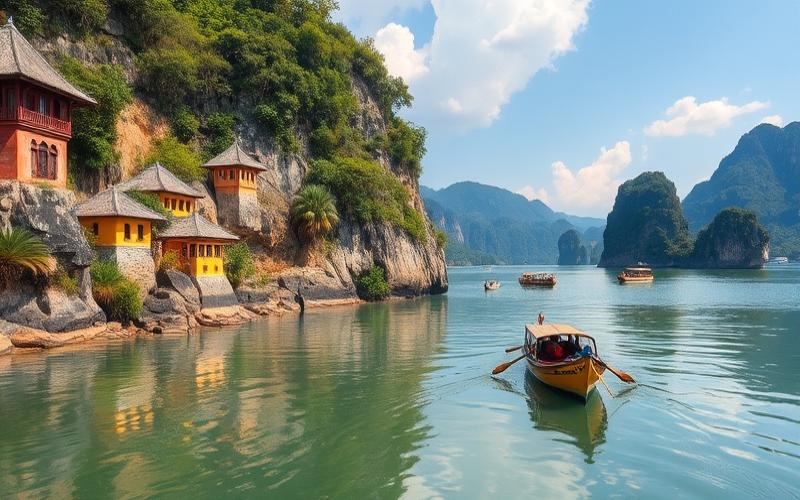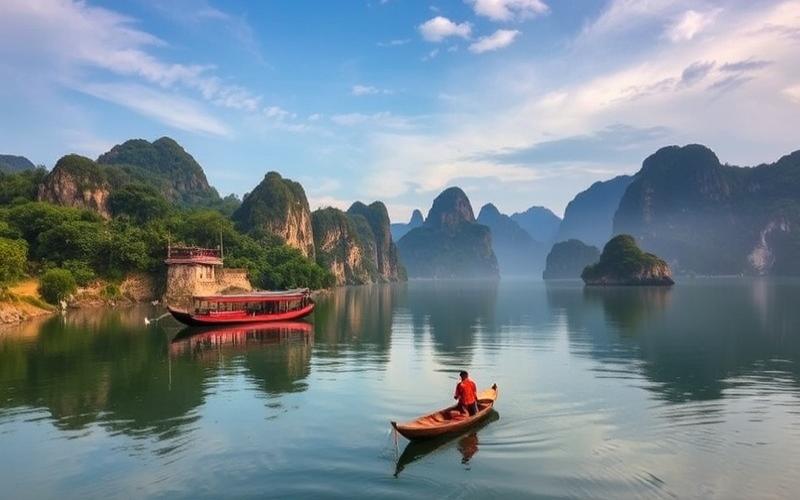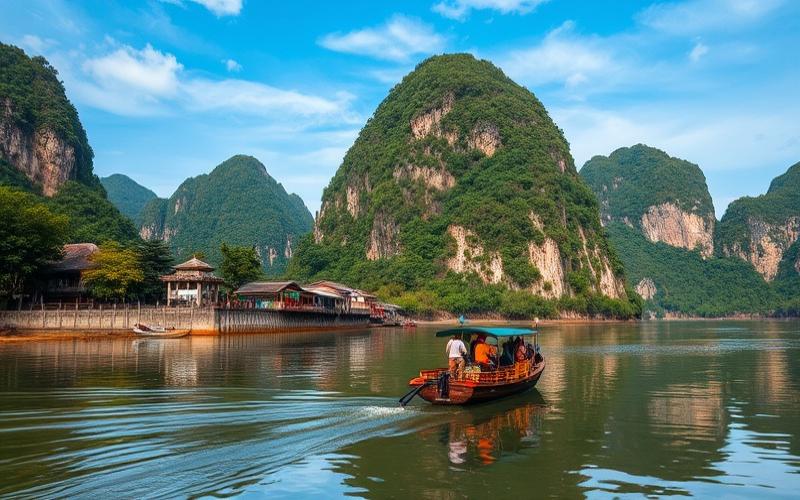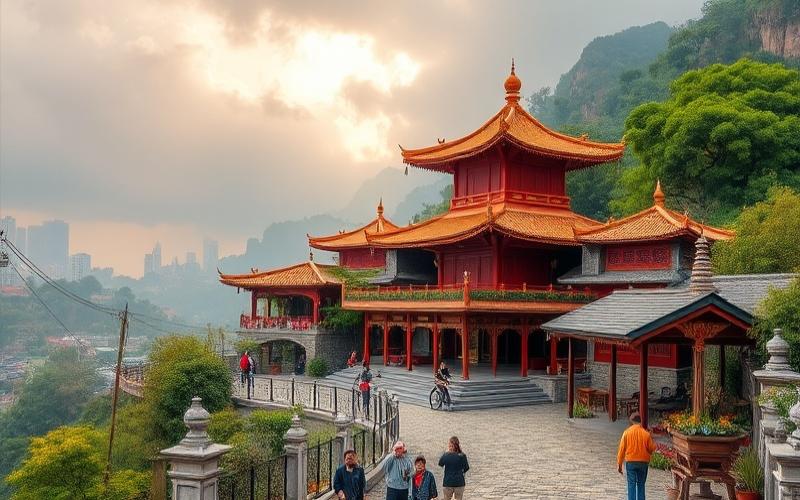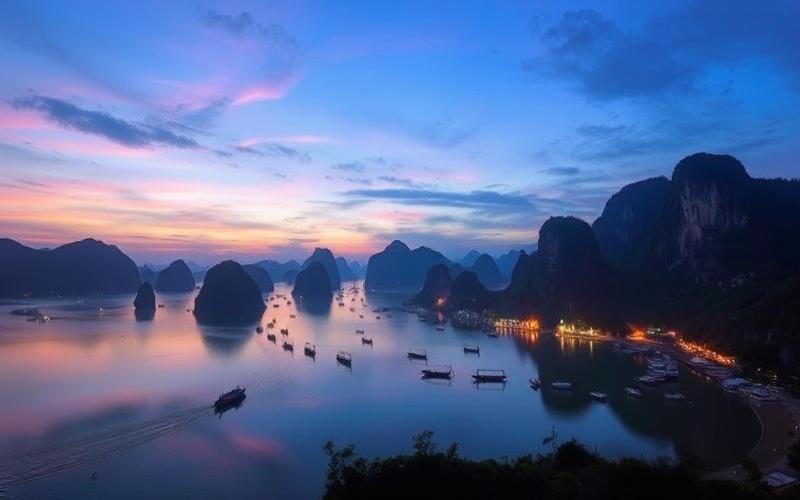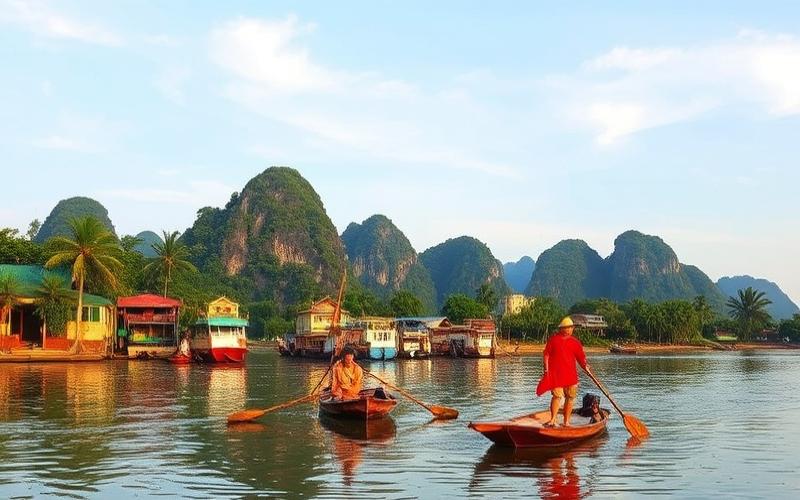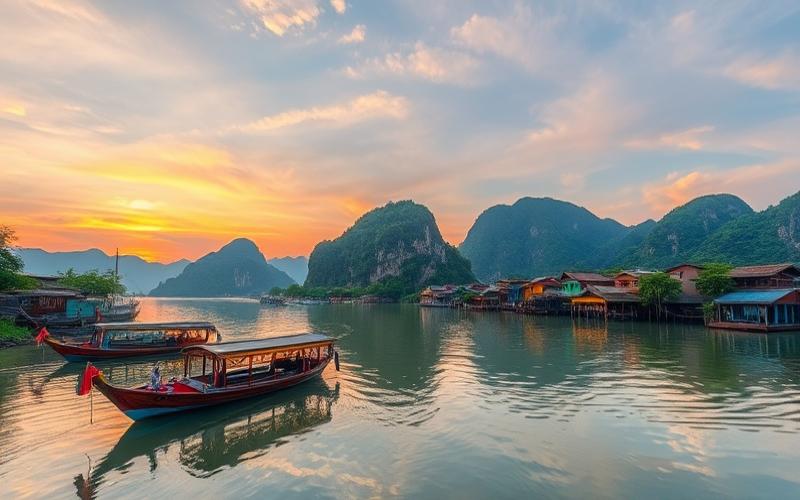
 Published on and written by Cyril Jarnias
Published on and written by Cyril Jarnias
Vietnam: A Booming Investment Destination
Vietnam, with its rich culture and picturesque landscapes, is becoming a preferred destination for investors seeking new opportunities.
Authentic Villages: New Centers of Attraction
As the country continues its economic growth, authentic villages are emerging as attractive hubs for those wanting to discover a unique living environment while achieving an attractive return on investment.
2025: A Unique Opportunity
In 2025, these hidden gems, with their blend of cultural heritage and economic potential, offer a captivating window for those seeking to balance tradition and innovation.
Good to Know:
Discover how investing in these villages not only supports local development but also offers a chance to participate in one of the world’s most promising real estate markets.
Investment in Vietnam’s Authentic Villages: Untapped Potential
Unique Characteristics of Vietnamese Authentic Villages
Vietnam’s authentic villages stand out through the preservation of their natural and cultural heritage. They offer:
- Exceptional traditional architecture (laterite brick houses, stilt houses, red-tiled roofs, ancient pagodas)
- Preserved rural landscapes: hills, lakes, fruit gardens, terraced rice fields
- Ancestral lifestyles based on solidarity, community life around the communal house and village festivals
- Artisanal crafts passed down through generations (ceramics, weaving, carving)
- A peaceful pace of life, away from urbanization and mass tourism
Economic Sectors for Development
- Ecotourism: immersive discovery tours, homestays, hiking, participatory agricultural activities
- Handicrafts: development of local product sectors (ceramics, embroidery, basketry, wooden objects, silks)
- Organic farming: valorization of local crops (rare fruits like Thanh Tra, vegetables, medicinal plants), short supply chains and processed products
- Traditional cuisine: cooking workshops, tasting of rural specialties
| Sector | Development Opportunities |
| Ecotourism | Responsible stays, hiking |
| Handicrafts | Export, local valorization |
| Organic Farming | Niche markets, food tourism |
| Cuisine | Workshops, gourmet tours |
Current Infrastructure and Improvement Needs
- Sometimes difficult road access, insufficient signage
- Limited accommodations, often basic
- Lack of structured tourist services (trained guides, information centers)
- Need for improvement in internet and telephone networks
- Connection to drinking water and waste management needs strengthening
List of Priority Needs:
- Modernization of access roads and public transportation
- Development of quality eco-friendly accommodations
- Creation of welcome and interpretation centers
- Training in tourist hospitality and digital marketing
- Support for innovation in crafts and agri-food
Examples of Local Success Stories
- Thai Hai village, ranked among the world’s best tourist villages for its commitment to conservation, ecotourism and valorization of Tay culture.
- Duong Lam, recognized as a “national historical heritage,” attracts many visitors through the preservation of its ancient houses and promotion of its intangible heritage.
- Thuy Bieu, near Hue, has developed agritourism around Thanh Tra pomelo cultivation, combining homestays and craft workshops.
Government Initiatives
- Classification and protection of villages as “national heritage”
- Support for restoration of ancient houses and community infrastructure
- Programs promoting rural tourism and craft exports
- Tax incentives for investments in ecotourism and sustainable agriculture
- Public-private partnerships for infrastructure development
Challenges and Issues to Overcome
- Preservation of authenticity facing tourism pressure and modernization
- Training local populations in hospitality and tourism management
- Combating rural exodus and maintaining transmission of know-how
- Sustainable funding for restoration of old buildings and innovation
- Adaptation to international standards in hygiene, safety and environmental management
Vietnamese authentic villages represent tremendous potential for sustainable investment, provided challenges related to heritage preservation, training of local stakeholders, and infrastructure improvement are addressed.
Good to Know:
Vietnam’s authentic villages, with their picturesque landscapes and intact cultural richness, offer unique investment potential, particularly in sectors like ecotourism, traditional crafts, and organic farming. These villages stand out through their authenticity and well-preserved traditions, attracting increasing numbers of visitors seeking immersive experiences. Currently, while improved, infrastructure requires investments to optimize access and attractiveness, making the opportunity to invest highly promising. For instance, notable successes have been observed when foreign investments funded sustainable ecotourism projects, thereby increasing local income. Government initiatives such as tax incentives and rural development programs aim to encourage these investments, but challenges remain, including environmental preservation and managing tourism growth. These improvements and efforts promise to maximize the economic potential of these areas while preserving their unique charm.
Underestimated Rural Regions: Unique Opportunities for Investors
Vietnam’s rural regions present strategic advantages for investors, including abundant natural resources, lower cost of living and production, and strong sustainable development potential. These assets, combined with an increasingly favorable regulatory environment and tax incentives, create fertile ground for profitable and innovative investments.
Specific Advantages of Vietnam’s Rural Regions:
- Abundant Natural Resources: Fertile agricultural land, forests, high biodiversity, access to fresh water, favorable conditions for agriculture and energy exploitation.
- Lower Cost of Living and Production: Land prices are generally three to five times lower than in major cities; competitive local labor costs.
- Support from Local Authorities: Programs such as “One Commune, One Product” (OCOP) and tax incentives for innovative and sustainable businesses.
- Sustainable Development Potential: Preserved spaces, low urban density, growing interest in environmentally friendly economic models.
| Advantages | Details and Concrete Examples |
|---|---|
| Natural Resources | Agricultural land, forests, water, biodiversity |
| Lower Cost of Living | Land 3-5x cheaper than in Hanoi, affordable local labor |
| Institutional Support | OCOP programs, tax incentives, simplified administrative procedures |
| Development Potential | Natural sites, cultural traditions, low density |
Particularly Profitable Investment Types:
Organic Farming
- Conversion of agricultural land to organic production to meet growing national and international demand.
- Example: Cooperatives in Thanh Hoa saw their income increase by 20-30% after organic certification, thanks to export chains to Europe and Japan.
Ecotourism
- Development of authentic villages, restoration of natural and heritage sites, valorization of local traditions (songs, dances, crafts).
- Example: In Pu Luong, tourism revenue doubled between 2021 and 2024, with the creation of hundreds of local jobs and an increase in household income.
Renewable Energy
- Exploitation of solar, wind, and biomass energy thanks to land availability and favorable sunlight.
- Example: Several solar farms in central provinces generated annual returns exceeding 15%, while providing energy to remote areas.
Recent Success Examples:
Rural Tourism in Thanh Hoa: Development of hundreds of tourist sites and restoration of cultural relics, training of 371 local stakeholders since 2021, creation of value chains around tourist hospitality.
Green Real Estate on Hanoi’s Outskirts: Projects led by Vingroup and Ecopark, integrating green spaces and sustainable services, with rapid land appreciation due to urban migration and modern transport infrastructure.
Challenges to Overcome and Associated Opportunities:
- Limited Infrastructure (roads, internet access, logistics)
- Lack of Skilled Labor
- Access to Financing and Technology
Innovative Solutions and Opportunities:
- Public-Private Partnerships for modernization of basic infrastructure (roads, digital connectivity).
- Development of Local Training Platforms to improve skills in organic farming, tourism, and energy maintenance.
- Microfinancing and Impact Investment to support SMEs and rural cooperatives.
- Valorization of Intangible Heritage: Creation of tourist circuits around artisanal know-how and traditional festivals.
| Identified Challenges | Transformation Opportunities | Solution Examples |
|---|---|---|
| Infrastructure | Develop logistics and digital hubs | Partnerships, public incentives |
| Labor | Train locally, attract young graduates | Rural training centers |
| Access to Financing | Microcredit, impact investment funds | Cooperatives, crowdfunding |
Trends Towards 2025:
- Rise in Investments in Sustainable Agriculture and Ecotourism.
- Growth of Renewable Energy Projects in rural areas.
- Urbanization of Satellite Areas with integration of green spaces and modern public services.
- Strengthening the Role of Local Communities in governance and project valorization, ensuring inclusive and sustainable development.
Vietnam’s rural regions are thus positioning themselves as hubs of innovation and growth, offering investors attractive return prospects while contributing to the country’s sustainable transformation.
Good to Know:
Vietnam’s rural regions offer abundant natural resources, competitive cost of living, and sustainable development potential, making investment in these areas particularly attractive. Organic farming, for example, has seen significant growth, as evidenced by the success of farms in Ha Giang that now export to Europe. Ecotourism also represents a promising niche: Sapa has shown how responsible tourism can boost the local economy while preserving the environment. In renewable energy, emerging solar projects in the Mekong Delta illustrate the region’s potential for clean energy. However, limited infrastructure poses challenges, but these can be transformed into opportunities through innovative solutions, such as developing sustainable roads through public-private partnerships. According to a World Bank study, these regions could see their attractiveness increase by 20% by 2025, confirming the potential for high returns on investment for those who adapt to local realities and bet on innovative strategies.
Vietnamese Rural Real Estate: A Growing Market
Economic and Social Context
Vietnam is experiencing sustained economic growth with rising GDP, a burgeoning middle class, and an increasingly sophisticated investor base. Rapid urbanization – the rate is expected to reach 45% by 2025 – is changing demographic dynamics, pushing many urban dwellers to seek alternatives to big cities. This context favors the emergence of the rural real estate market, stimulated by lower borrowing costs, improved investment climate, and implementation of structural reforms.
Specific Factors Driving Rural Real Estate Growth
- Increased Demand for Housing Outside Urban Centers, driven by:
- Saturation and high costs in major cities.
- The search for better quality of life in preserved natural environments.
- Natural Beauty: Rural regions offer mountainous landscapes, rice fields, or coastlines still underdeveloped.
- Community Tourism: The rise of responsible and local tourism attracts individual investors or tourism operators to these authentic areas.
Main Identified Reasons:
- Post-pandemic lifestyle changes
- Growing attractiveness for second homes
- Development of remote work favoring relocation outside metropolitan areas
Government Policies and Local Initiatives
| Mechanism | Objective | Incentives |
|---|---|---|
| National Programs | Modernize rural infrastructure | Subsidized loans, grants |
| Resolution No. 148/NQ-CP | Urban/rural planning until 2045 | Tax relief |
| Local Tourism Development | Valorize natural/cultural heritage | Support for eco-projects |
Authorities also emphasize administrative simplification to accelerate land transactions in certain pilot provinces.
Rural Regions with High Potential (2025 Horizon)
| Region | Key Assets |
|---|---|
| Ha Giang | Spectacular landscapes; ethnic tourism |
| Sapa (Lao Cai) | Mountains; growing tourism popularity |
| Quang Binh | UNESCO-listed caves; ecotourism development |
| Ninh Binh | Proximity to Hanoi; iconic rice fields |
These regions combine progressive accessibility thanks to new road/rail infrastructure and major natural appeal.
Challenges for Investors & Possible Solutions
List of main encountered obstacles:
- Still insufficient infrastructure (roads, networks)
- → Solution: rely on joint public/private projects
- Complex or evolving regulatory framework
- → Solution: partner with experienced local partners
- Local administrative bureaucracy
- → Solution: prioritize provinces already offering a one-stop shop for rural investment
Important Text
Despite these persistent structural challenges, the general trend is one of continuous improvement driven by government impetus.
Concrete Examples of Successful Projects
Non-exhaustive list:
- Ecolodge Tam Coc Garden (Ninh Binh): harmonious integration with local village — success with high-end tourists
- Homestay Dao Lodge (Ha Giang): community project blending traditional accommodation & cultural experience – strong seasonal profitability
- Farmstay Phong Nha Lake House Resort (Quang Binh): capitalizing on growing influx around the national park
These examples illustrate how local architectural authenticity coupled with adapted services enable rapid appreciation both in land value and commercial success.
Synthetic list of key opportunities:
- Portfolio diversification facing saturated urban market
- Upside potential linked to green tourism boom
- Assured valorization through proactive public policies
Vietnam’s rural real estate market thus establishes itself as fertile ground for those wishing to invest in “authentic Vietnam” while betting on sustainable growth until 2025.
Good to Know:
The rural real estate market in Vietnam is experiencing dynamic growth, stimulated by a favorable economic context and increased interest in rural lifestyles. Rapid urbanization is pushing many Vietnamese and foreigners to seek alternatives outside urban centers, attracted by the natural beauty and authentic culture of rural regions. The Vietnamese government supports this trend through tax incentives and rural development programs to encourage investments, particularly in key regions like the Mekong Delta or the Central Highlands, which offer promising growth potential thanks to their rich biodiversity and appeal for community tourism. Successful projects, such as the development of eco-friendly bungalows in Ha Giang province, illustrate lucrative opportunities. However, investors must consider challenges such as limited infrastructure and bureaucracy, although solutions exist, including through local partnerships.
Preserving Authenticity and Heritage While Investing
Respecting local traditions and cultures is a fundamental principle when investing in Vietnamese villages. This respect is essential not only to preserve each community’s unique identity but also to guarantee the long-term viability of economic and tourism projects.
Concrete Examples of Successful Investments
| Project or Village | Approach Adopted | Results Achieved |
|---|---|---|
| Trang An (Ecotourism Area) | Green tourism model: traditional activities (boating, crafts), community involvement | Preservation of natural and cultural heritage, creation of local jobs, reduction of rural exodus |
| Bat Trang (Ceramics Village) | Support for traditional crafts with opening to community tourism | Valorization of local know-how, increased income through tourism |
| Sapa & Mai Chau | Homestays involving ethnic minorities; low environmental impact activities | Diversification of local income, safeguarding of indigenous cultures |
Strategies to Integrate Modern Infrastructure Without Harming Heritage
- Prioritize traditional materials and techniques during construction or renovation.
- Adapt the size and architectural style of new buildings to local norms.
- Invest in renewable energy to minimize ecological footprint.
- Develop soft transportation (biking, walking) to limit intrusive motorized traffic.
- Systematically involve local communities in every project stage.
Positive Impacts of a Responsible Approach on Sustainable Tourism
- Maintaining authenticity attracts an international audience seeking unique experiences.
- Direct involvement of populations fosters their role as territory ambassadors.
- Economic benefits are better distributed: local jobs, artisanal valorization.
Community engagement not only strengthens cultural preservation but also enables concrete improvement in local living standards through inclusive economic development.
Key Recommendations for Potential Investors
- Consult local representatives upfront to understand their cultural expectations.
- Prioritize shared governance with active inclusion of inhabitants in all decision-making.
- Systematically assess environmental impact before launching any modern infrastructure.
- Fund educational programs on heritage conservation for both residents and visitors.
- Favor public/private partnerships focused on sustainability rather than immediate returns.
Respecting and valorizing local heritage is not a constraint but a strategic asset enabling sustainable economic success while actively participating in Vietnamese cultural preservation.
Good to Know:
When investing in Vietnam’s authentic villages, respecting local traditions and cultures is essential to preserve their charm and heritage. Projects like the Aira Boutique Sapa Hotel have successfully integrated modern infrastructure while using local materials and traditional craft techniques, thus maintaining harmony with the natural and cultural environment. Moreover, a responsible approach attracts sustainable tourism, which directly benefits the local economy without altering the cultural landscape. To combine economic benefit and cultural preservation, investors must collaborate with local communities and prioritize projects that highlight artisanal know-how and customs, creating a mutually beneficial exchange between modernity and tradition.
Disclaimer: The information provided on this website is for informational purposes only and does not constitute financial, legal, or professional advice. We encourage you to consult qualified experts before making any investment, real estate, or expatriation decisions. Although we strive to maintain up-to-date and accurate information, we do not guarantee the completeness, accuracy, or timeliness of the proposed content. As investment and expatriation involve risks, we disclaim any liability for potential losses or damages arising from the use of this site. Your use of this site confirms your acceptance of these terms and your understanding of the associated risks.


